We finish our search for future farms close to where we started – in the Netherlands. I recently bumped into Tom, at least that is how I will refer to him because I never caught his actual name.
Tom is a beef farmer living close to the river Rhine. He leases some of the floodplains from the State Nature Conservation Board for summer grazing. He recently turned his cattle out to grass and that was the point at which we had our conversation.
Tom challenged me to name his crossbreeds. I managed Belgian Blue, MRI, Friesian, and is that one there a Hereford cross? He frowns wryly. Clearly, I am not a beef farmer, but – in his words – “neither a vegetarian”.
Tom tells me that he is officially retired but keeps a few cattle for the sake of it. Are his children taking over the farm, I asked? “No”, his son has gone into the medical industry – better money. His daughter-in-law lived in Dublin for 10 years – a small world indeed.
570m reasons
That evening, I keep thinking of Tom. I know very little about him and while I have been proven wrong before, he did not strike me as a particularly militant farmer, nor as a progressive green activist. Tom is one of 570m farmers worldwide, who are left wondering what the future holds for farming and food.
That is why Tom reminds me of the reason why we went on our global journey in search of lighthouse farms. In search of new solutions, by farmers and for farmers, to meet the challenges of sustainability. Not only today’s challenges, but also tomorrow’s challenges. Making beef production climate neutral, for example.
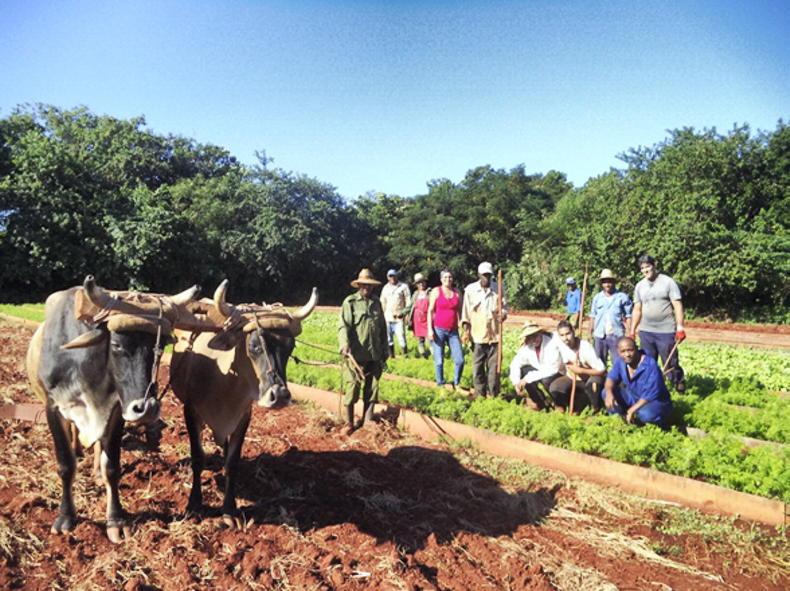
Farmers have to use the resources at their disposal such as on this organic farm in Cuba.
Lighthouse farms are real farms and real communities that have already found new solutions for these challenges that have been proven to work.
Strip-cropping to keep pests and diseases at bay, a caviar farm powered by 1,000 dairy cows, a Colombian farming community presenting its own coffee label where cocaine was once the main commodity. Each of their stories gives us hope that solutions can be found. Does that mean that lighthouse farms can be ‘copied and pasted’ into other farming systems? No, not at all – there is only room for so many caviar farms! But our aim is that, for every farmer in the world, there is at least one Lighthouse Farm that sparks curiosity or inspiration.
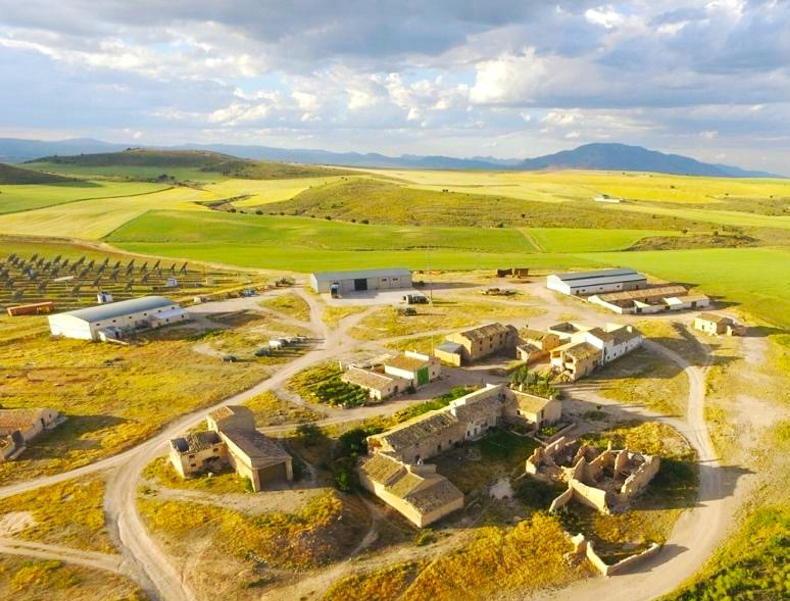
Farms are not just about farmers as they bring life to he whole community, as in La Junquera in Spain.
An example is the way our Finnish lighthouse farm shows that bioenergy production does not need to come at the expense of food production.
How our Brazilian lighthouse farm shows that organic can be big business. How our Spanish and Ethiopian lighthouse communities show that it is possible to turn the desert green when people put their collective minds and shoulders to it.
‘Lighthouse farm diet’
Together, the lighthouse farms show the diversity of solutions that are out there. Some are large-scale and some are communities of smallholder farmers. Some are led by women, others by men. About half are certified organic, while the other half are not.
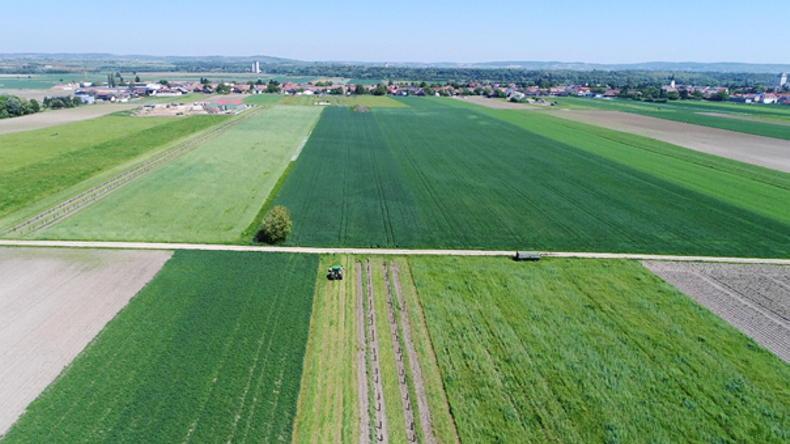
Austria has already reached the 25% target for organic farming.
Some focus on circularity, others on climate neutrality, biodiversity, soil health or human health.
Together, they also grow an impressive diversity of produce: one would do well to follow a “lighthouse farm diet” if such a thing existed.
It would include meat, milk and fish from places suited to animal production, cereals, pulses, root and leafy vegetables, fruits and nuts, honey, not to forget coffee. This wealth of produce is neither by design nor an accident; it is merely a reflection of the diverse bounty that farmers worldwide provide every day.
Ingredients of success
So what have we learnt? Diverse as our lighthouse farms are, they also share ingredients in common. What are these ingredients to success? One is that they all make use of the power of complexity in one way or another. This complexity takes many forms.
Examples would be multispecies swards in Ireland, the combination of rice, ducks and fish in Indonesia, or managing multi-year successional agro-forestry plots in Brazil.
We found the same outcome from this complexity everywhere we went – more food and greener credentials. But managing complexity is not easy.
For most farms, it involved a process of trial-and-error. And that process is what defines a lighthouse farmer – they think of what they can add to their farm, rather than what they can scale back despite the setbacks.
None of them have done this on their own. They all tapped into their local networks of expertise and community spirit, each in their own way. Which leads us to our final conclusion – we cannot put the responsibility for sustainable farming solely at the feet of farmers.
Food processors, retailers, consumers, policymakers, farm advisers, NGOs, farmers, scientists: we all have a role to play. But how can we all share in the lessons from the lighthouse farms? How can we train the many professionals in the food system? And train the trainers of tomorrow’s professionals?
This is where we are combining forces with Wageningen Academy and Deloitte to introduce the Lighthouse Farm Academy. This is a modular certificate programme that combines online lectures, regional workshops and on-farm experiences.
Drawing on the experience of the lighthouse farms, this global classroom will equip professionals in the food system with the tools to illuminate the future for farmers like Tom. And Mary. And François, Paola, Ahmad and Melody.
Bright future
The future of farming and food is bright when and where we agree to put our collective minds and shoulders to it.
In short
The different lighthouse farms have a huge diversity of enterprises which produce a broad range of foods and feeds.One of the challenges of sustainability is to get the next generation to continue with farming and food production.The different lighthouse farms show that an ability to think outside the box can be hugely useful in finding a new focus for a farm.
We finish our search for future farms close to where we started – in the Netherlands. I recently bumped into Tom, at least that is how I will refer to him because I never caught his actual name.
Tom is a beef farmer living close to the river Rhine. He leases some of the floodplains from the State Nature Conservation Board for summer grazing. He recently turned his cattle out to grass and that was the point at which we had our conversation.
Tom challenged me to name his crossbreeds. I managed Belgian Blue, MRI, Friesian, and is that one there a Hereford cross? He frowns wryly. Clearly, I am not a beef farmer, but – in his words – “neither a vegetarian”.
Tom tells me that he is officially retired but keeps a few cattle for the sake of it. Are his children taking over the farm, I asked? “No”, his son has gone into the medical industry – better money. His daughter-in-law lived in Dublin for 10 years – a small world indeed.
570m reasons
That evening, I keep thinking of Tom. I know very little about him and while I have been proven wrong before, he did not strike me as a particularly militant farmer, nor as a progressive green activist. Tom is one of 570m farmers worldwide, who are left wondering what the future holds for farming and food.
That is why Tom reminds me of the reason why we went on our global journey in search of lighthouse farms. In search of new solutions, by farmers and for farmers, to meet the challenges of sustainability. Not only today’s challenges, but also tomorrow’s challenges. Making beef production climate neutral, for example.

Farmers have to use the resources at their disposal such as on this organic farm in Cuba.
Lighthouse farms are real farms and real communities that have already found new solutions for these challenges that have been proven to work.
Strip-cropping to keep pests and diseases at bay, a caviar farm powered by 1,000 dairy cows, a Colombian farming community presenting its own coffee label where cocaine was once the main commodity. Each of their stories gives us hope that solutions can be found. Does that mean that lighthouse farms can be ‘copied and pasted’ into other farming systems? No, not at all – there is only room for so many caviar farms! But our aim is that, for every farmer in the world, there is at least one Lighthouse Farm that sparks curiosity or inspiration.

Farms are not just about farmers as they bring life to he whole community, as in La Junquera in Spain.
An example is the way our Finnish lighthouse farm shows that bioenergy production does not need to come at the expense of food production.
How our Brazilian lighthouse farm shows that organic can be big business. How our Spanish and Ethiopian lighthouse communities show that it is possible to turn the desert green when people put their collective minds and shoulders to it.
‘Lighthouse farm diet’
Together, the lighthouse farms show the diversity of solutions that are out there. Some are large-scale and some are communities of smallholder farmers. Some are led by women, others by men. About half are certified organic, while the other half are not.

Austria has already reached the 25% target for organic farming.
Some focus on circularity, others on climate neutrality, biodiversity, soil health or human health.
Together, they also grow an impressive diversity of produce: one would do well to follow a “lighthouse farm diet” if such a thing existed.
It would include meat, milk and fish from places suited to animal production, cereals, pulses, root and leafy vegetables, fruits and nuts, honey, not to forget coffee. This wealth of produce is neither by design nor an accident; it is merely a reflection of the diverse bounty that farmers worldwide provide every day.
Ingredients of success
So what have we learnt? Diverse as our lighthouse farms are, they also share ingredients in common. What are these ingredients to success? One is that they all make use of the power of complexity in one way or another. This complexity takes many forms.
Examples would be multispecies swards in Ireland, the combination of rice, ducks and fish in Indonesia, or managing multi-year successional agro-forestry plots in Brazil.
We found the same outcome from this complexity everywhere we went – more food and greener credentials. But managing complexity is not easy.
For most farms, it involved a process of trial-and-error. And that process is what defines a lighthouse farmer – they think of what they can add to their farm, rather than what they can scale back despite the setbacks.
None of them have done this on their own. They all tapped into their local networks of expertise and community spirit, each in their own way. Which leads us to our final conclusion – we cannot put the responsibility for sustainable farming solely at the feet of farmers.
Food processors, retailers, consumers, policymakers, farm advisers, NGOs, farmers, scientists: we all have a role to play. But how can we all share in the lessons from the lighthouse farms? How can we train the many professionals in the food system? And train the trainers of tomorrow’s professionals?
This is where we are combining forces with Wageningen Academy and Deloitte to introduce the Lighthouse Farm Academy. This is a modular certificate programme that combines online lectures, regional workshops and on-farm experiences.
Drawing on the experience of the lighthouse farms, this global classroom will equip professionals in the food system with the tools to illuminate the future for farmers like Tom. And Mary. And François, Paola, Ahmad and Melody.
Bright future
The future of farming and food is bright when and where we agree to put our collective minds and shoulders to it.
In short
The different lighthouse farms have a huge diversity of enterprises which produce a broad range of foods and feeds.One of the challenges of sustainability is to get the next generation to continue with farming and food production.The different lighthouse farms show that an ability to think outside the box can be hugely useful in finding a new focus for a farm.









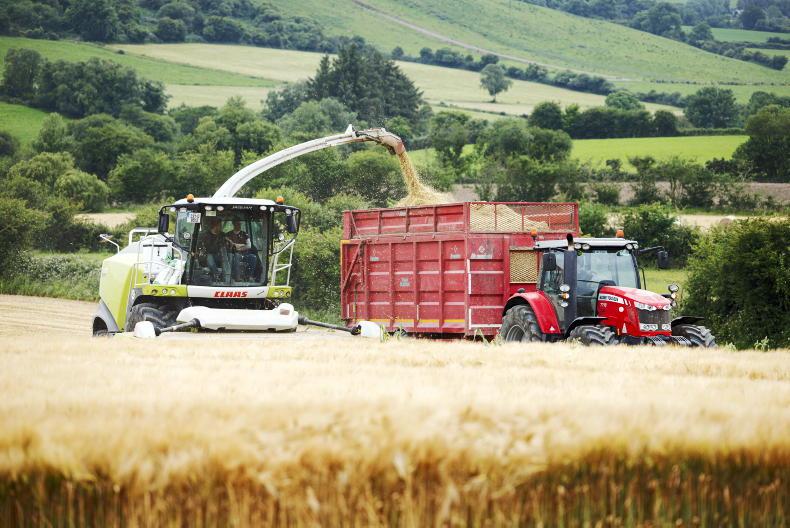

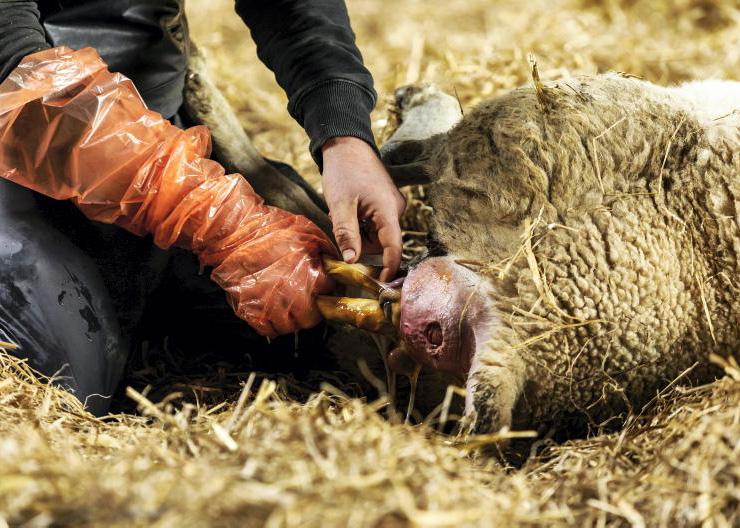


SHARING OPTIONS